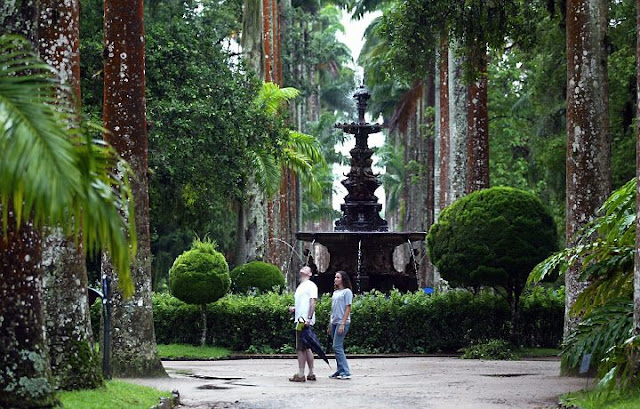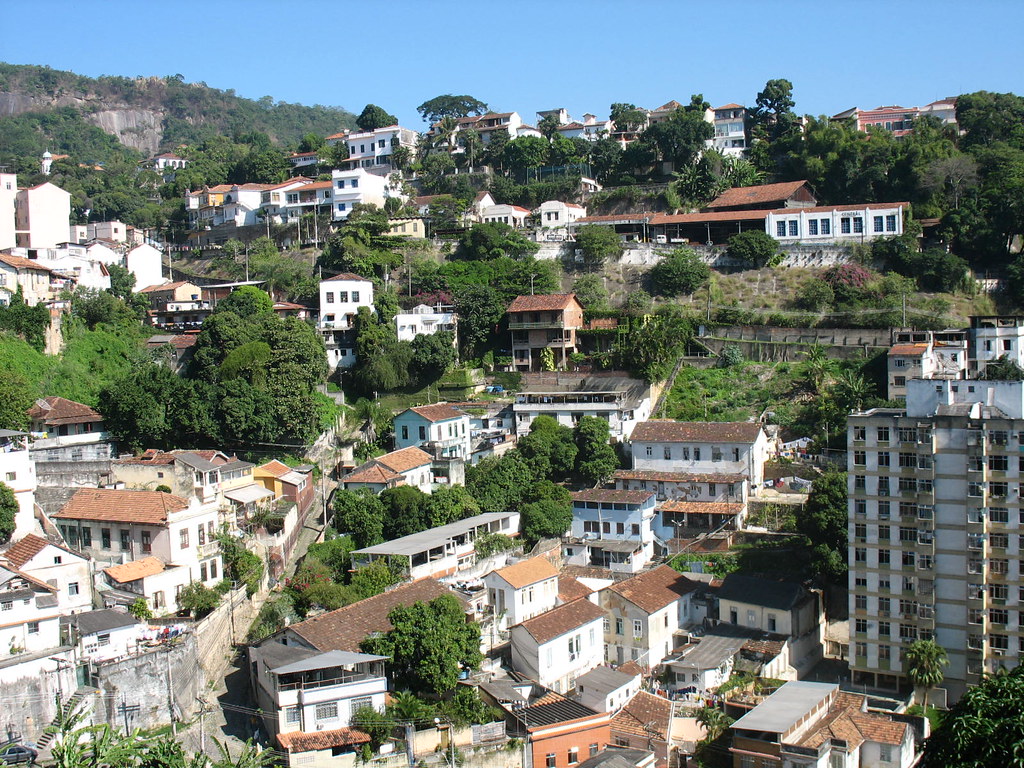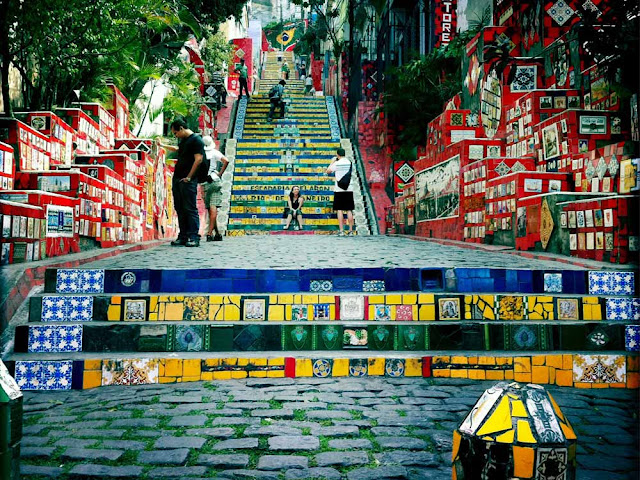Who doesn’t know the country of brazil, a country that is well known by the nickname samba, many famous football players who come from brazil but we will not discuss about the football because brazil is also famous with their travel destination especially the city of Rio de Janeiro, Brazil's second largest city has everything that tourists looking for, such as the stretch of white sandy beaches which sparkling, mountains landscape and the beauty port. Following places of tourist attractions in Rio de Janeiro that you must visit
1. Christ The Redeemer
Perched above an altitude of 710 meter at top of Mount Corcovado at Tijuca Forest National Park, the statue of Christ the Redeemer stands with hands outstretched, overlooks the city of Rio de Janeiro. This statue has become an icon for the city of Rio de Janeiro and Brazil. The construction of the statue began in 1922, during the heyday of the art deco movement, and is considered the largest art deco statue in the world.
The idea to build a giant statue at top of Corcovado was first suggested in the mid-1850s, when the catholic leader, Pedro Maria Boss requested funds from Princess Isabel to build a magnificent religious monument on the Summit of Corcovado.
1. Christ The Redeemer
Perched above an altitude of 710 meter at top of Mount Corcovado at Tijuca Forest National Park, the statue of Christ the Redeemer stands with hands outstretched, overlooks the city of Rio de Janeiro. This statue has become an icon for the city of Rio de Janeiro and Brazil. The construction of the statue began in 1922, during the heyday of the art deco movement, and is considered the largest art deco statue in the world.
The idea to build a giant statue at top of Corcovado was first suggested in the mid-1850s, when the catholic leader, Pedro Maria Boss requested funds from Princess Isabel to build a magnificent religious monument on the Summit of Corcovado.
| Christ The Redeemer |
2. Ipanema
Ipanema is a neighborhood located in the southern zone of the city Rio de Janeiro, Brazil, between Leblon and Arpoador. The beach at Ipanema is quite popular in Rio de Janeiro, which is mentioned in the song The Girl from Ipanema in 1960, written by Antonio Carlos Jobim and Vinicius de Moraes. Here, you can enjoy soft white sand and rolling waves. The view was made in the area are often included in the list of the best beaches in the world. Along the coast, souvenir trinkets, cafes and restaurants, as well as a variety of art galleries, theaters and clubs lined up to spoil the tourists.
Ipanema is a neighborhood located in the southern zone of the city Rio de Janeiro, Brazil, between Leblon and Arpoador. The beach at Ipanema is quite popular in Rio de Janeiro, which is mentioned in the song The Girl from Ipanema in 1960, written by Antonio Carlos Jobim and Vinicius de Moraes. Here, you can enjoy soft white sand and rolling waves. The view was made in the area are often included in the list of the best beaches in the world. Along the coast, souvenir trinkets, cafes and restaurants, as well as a variety of art galleries, theaters and clubs lined up to spoil the tourists.
| Ipanema |
3. Sugarloaf Mountain
Sugarloaf Mountain is the highest summit in Rio de Janeiro, Brazil, located at the mouth of Guanabara Bay on a peninsula that juts out into the Atlantic Ocean. Visitors can reach the top of the mountain by cable car is known as a glass-walled bondinho or Teleferico. The cable cars will depart every 20 minutes from the base of the Hill of Babylon and rise to the top of Morro da Urca. From there, visitors can ride the second cable car to reach the summit of the mountain.
| Sugarloaf Mountain |
4. Jardim Botanico
Located in the west of the region of Lagoa, Rio de Janeiro Botanical Garden or Jardim Botanico, is home to more than 8,000 species of plants. Built in the early 1800s, visitors can enjoy views of the palm trees. Visitors can also see 600 types of orchid are planted in the Park.
Jardim Botanico has several monuments and fountains, including the Japan grounds, a pool filled with water lilies and the Museu do Meio Ambiente, featuring exhibits that focus on the environment.
 |
| Jardim Botanico, Rio de Jeneiro |
5. Santa Teresa
Santa Teresa is the name of a neighborhood in Rio de Janeiro, Brazil. The town is situated on the Hill of Santa Teresa, and famous for the course of the winding and narrow, which apparently has been a favorite spot for artists and tourists. Perched on a hill overlooking the City Harbor, Santa Teresa invite visitors to enjoy views of the plantation houses of the 19th century and cobblestone streets. This district is a haven for artists, musicians and writers in the 20th century.
 |
| Santa Teresa |
6. Lapa
Located in downtown Rio, Lapa also known as Centro, the environment was a red-light district in the city. Currently, the area is known for its monuments and the lively nightlife. Most of the architectural environment in this place brings visitors back to the 1800s, provide a beautiful backdrop for a celebration. This is the perfect place to sample the local cuisine of Brazil.
Lapa also became home to the Arcos da Lapa, the amazing aqueduct that was built in the mid-18th century by the colonial government. Other historical attractions that are important for you to know is the Passeio Publico, first City Park which was built in the 1780s.
 |
| Lapa, Downtown Rio de Jeneiro |





0 comments:
Post a Comment